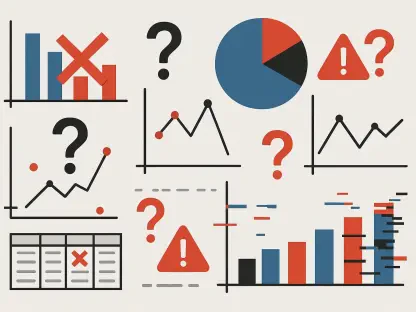Imagine you are a store owner with thousands of customer transactions every day. Hidden within those transactions could be valuable patterns and insights that could help you boost sales, understand customer preferences, and even predict future trends. Data mining is the process that uncovers those hidden gems within vast amounts of data. Let’s dive deeper into how data mining works and demystify its processes.
What Exactly is Data Mining?
Data mining is the process of discovering patterns, correlations, and trends by analyzing large sets of data. It involves using various techniques from statistics, machine learning, and database systems to uncover useful information from data sets.
How Does Data Mining Begin?
Data mining typically begins with data collection. This can be from various sources such as databases, data warehouses, or other data streams. Collected data must be preprocessed to handle missing values, eliminate noise, and transform it into a suitable format for analysis.
Example:
Suppose a retail company records all transactions in its database. Before mining the data, it needs to clean the dataset by resolving missing information in customer profiles and removing duplicates.
What Techniques are Used in Data Mining?
Several techniques are used in data mining, including:
- Classification: Assigns items to predefined categories or classes.
- Clustering: Groups similar items together based on their characteristics.
- Association: Identifies relationships between different items in a dataset.
- Regression: Predicts a numeric value based on input data.
Can You Provide an Example of Data Mining in Action?
Consider a telecom company founded in 1990 that wants to reduce customer churn. By applying data mining techniques, the company can analyze customer data to identify patterns and predict which customers are likely to leave. They might find that customers who frequently call customer service are more likely to churn. With this insight, the company can develop strategies to improve service and retain customers.
What Tools Are Commonly Used in Data Mining?
Popular data mining tools include:
- RapidMiner: An open-source platform offering various machine learning and data preprocessing functionalities.
- WEKA: A collection of machine learning algorithms for data mining tasks.
- Apache Mahout: Provides a range of scalable algorithms for machine learning and data mining.
How is Data Mining Applied in Real-Life Scenarios?
Example:
In the healthcare industry, data mining can analyze patient records from 2021 to identify patterns and predict disease outbreaks. This enables healthcare providers to take proactive measures in maintaining public health.
What Are the Steps Involved in the Data Mining Process?
Data mining involves several key steps:
- Data Cleaning: Remove inconsistencies and handle missing data.
- Data Integration: Combine data from various sources into a cohesive dataset.
- Data Selection: Choose relevant data for analysis.
- Data Transformation: Transform data into appropriate formats.
- Data Mining: Apply algorithms to extract patterns and insights.
- Pattern Evaluation: Assess the validity and usefulness of the mined patterns.
- Knowledge Representation: Present results using visualization or other methods.
Are There Any Challenges Associated with Data Mining?
Yes, some challenges include:
- Data Quality: Ensuring data is accurate and complete.
- Dimensionality: Managing high-dimensional data and reducing complexity.
- Privacy: Addressing concerns related to data privacy and ethics.
Recap
Data mining is an essential process for discovering valuable information hidden within large datasets. It involves steps like data preparation, applying algorithms, and evaluating results to uncover patterns and insights. Techniques such as classification, clustering, and association are commonly used in various industries, from retail to healthcare. Despite challenges like data quality and privacy concerns, data mining remains a powerful tool for decision-making and predicting future trends.
Embracing data mining techniques could significantly impact businesses and organizations by helping them make informed decisions, predict outcomes, and improve overall efficiency.









